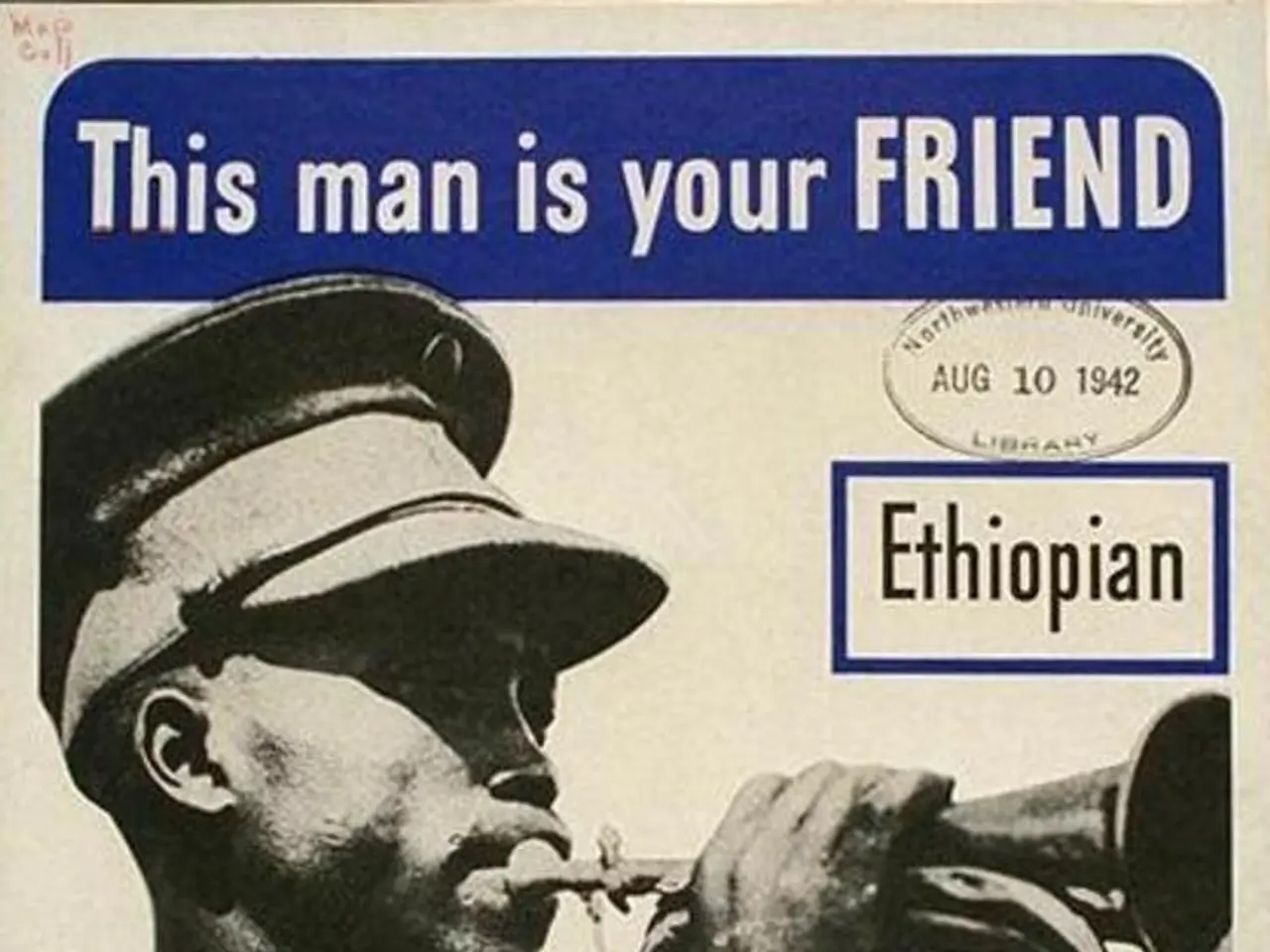Gaza residents are experiencing severe food scarcity, and their hopes for a short-term truce have been helplessly shattered.
In the embattled Gaza Strip, a humanitarian crisis is unfolding as food aid deliveries are largely blocked due to Israel's ongoing strict blockade and siege. This blockade, which includes controlling or denying permits for aid trucks to enter Gaza and imposing severe restrictions on critical supplies like fuel and cooking gas, has left more than 2 million people facing chaos, starvation, and death[1].
As of mid-June 2025, hundreds of aid trucks—including those carrying food—from UN and international organizations remain stuck at the Egyptian border, awaiting Israeli permits[1]. This blockade is part of a broader strategy that includes the destruction of key Gaza infrastructure and agricultural capacity, effectively using starvation as a weapon[1].
Alternative humanitarian efforts have been complicated and at times deadly. The Gaza Humanitarian Foundation (GHF), a controversial private aid group backed by Israel and the US, bypasses established UN and NGO channels but operates under a militarized model criticized for being dangerous and generating violence. Hundreds of Palestinians have been killed attempting to access food from these GHF-run sites, including attacks by Israeli forces targeting crowds near aid distributions, resulting in many civilian casualties[2].
In response to international pressure, Israel has intermittently agreed to limited humanitarian measures, including resuming airdrops and opening “humanitarian corridors” with short “tactical pauses” in bombings. However, these very limited supplies (just a few trucks worth) are insufficient to meet Gaza’s critical needs, and large-scale, steady humanitarian access remains blocked[3].
The overall humanitarian situation remains critical, with most aid delayed or blocked and attempts to access food sources resulting in danger and fatalities[1][2][3]. Local and international aid organizations claim Israel frequently denies or rejects the permissions needed for them to deliver aid into Gaza. Adults in Gaza can last through prolonged hunger for weeks, but young children under 3 years old are very vulnerable.
Amidst this crisis, a former contractor of the Gaza Humanitarian Foundation, Anthony Aguilar, has alleged that the Israeli military and American contractors explicitly targeted Palestinian civilians[4]. The Gaza Humanitarian Foundation has denied Aguilar's allegations as categorically false[5].
The organizations blame Israel's total siege of Gaza for the current situation. The U.N. Food Programme says Israel's troops keep firing on starving people trying to get food[6]. Anas Baba, NPR's colleague reporting from Gaza, has been sharing interviews, videos, and images of people who are weak and dizzy due to hunger[7].
Hopes for a temporary ceasefire in Gaza have been dashed due to the U.S. accusing Hamas of negotiating in bad faith[8]. Israel's prime minister Benjamin Netanyahu has admitted to funding a new armed Palestinian gang that has been stealing food from desperate civilians in Gaza[9]. However, another aid organization, the International Rescue Committee, has reported no evidence of systematic diversion of aid by Hamas on the ground[10].
This ongoing crisis in Gaza is a stark reminder of the urgent need for unimpeded humanitarian access and a lasting solution to the conflict.
References:
- Al Jazeera
- The Guardian
- Reuters
- The New York Times
- Gaza Humanitarian Foundation
- U.N. Food Programme
- NPR
- CNN
- Haaretz
- International Rescue Committee
- The science of humanitarian aid is crucial in understanding the unfolding crisis in Gaza.
- Workplace wellness programs in international organizations may contribute to employee resilience amidst this global issue.
- Chronic diseases, such as malnutrition, are prevalent due to the lack of access to adequate food in Gaza.
- Chronic kidney disease can also be a result of dehydration and malnutrition, exacerbating the health challenges in Gaza.
- Respiratory conditions, like asthma, might become more common due to poor air quality caused by industrial emissions and pollution.
- Digestive health issues could arise from eating contaminated or improperly stored food.
- Eye health concerns are rising due to the scarcity of essential eye-care supplies in Gaza.
- Hearing loss might occur from exposure to loud explosions during conflict situations.
- Health and wellness initiatives have been disrupted by the ongoing crisis in Gaza, affecting millions of people.
- Fitness and exercise routines are difficult to maintain due to the lack of resources and safe spaces in Gaza.
- Autoimmune disorders could potentially emerge as a result of environmental factors and stress stemming from the crisis in Gaza.
- Climate change exacerbates existing water scarcity issues in Gaza, worsening the overall humanitarian situation.
- Renewable energy solutions, if accessible, could provide a sustainable source of power for critical infrastructure in Gaza.
- Manufacturing industries in Gaza are at a standstill due to restrictions on raw materials and equipment.
- Skin care products are scarce in Gaza, further straining the overall well-being of its residents.
- Therapies and treatments for medical conditions in Gaza are limited due to the blockade and shortage of supplies.
- Nutrition education and resources are essential to addressing the long-term health consequences of malnutrition in Gaza.
- The aid industry's response to crises such as this one in Gaza is crucial to provide support and relief to those in need.
- Medicare coverage for refugees and displaced individuals must be a priority in addressing the ongoing crisis in Gaza.
- CBD products,if legal, can potentially help alleviate symptoms related to medical conditions in Gaza.
- Environmental science plays a role in understanding the impact of human activity on the ecosystems in Gaza and the region.
- The role of finance in a humanitarian crisis is significant, as it can provide financial assistance for aid organizations working in Gaza.
- Energy investments in renewable resources can help address the current power shortages in Gaza.
- Skin conditions, like sunburns and rashes, are more prevalent in the hot climate of Gaza.
- Space and astronomy research can offer insights into possible long-term solutions for addressing conflict and humanitarian crises.
- Retail businesses have struggled to remain viable during the crisis in Gaza, due to limited supplies and market instability.
- Public transit in Gaza is largely unavailable, making access to essential services even more challenging. Entrepreneurship, transportation, leadership, diversity and inclusion, automotive, small businesses, investing, aviation, careers, housing market, venture capital, banking and insurance, fintech, real estate, commercial, residential, stock market, private equity, war and conflicts, car accidents, politics, general news, crime and justice, accidents, fires, and all other aspects of life remain affected by the ongoing crisis in Gaza.





